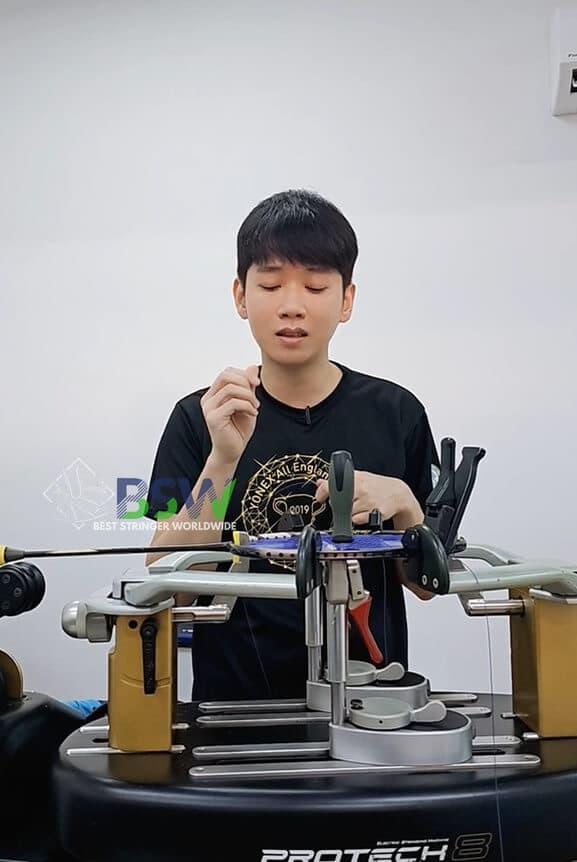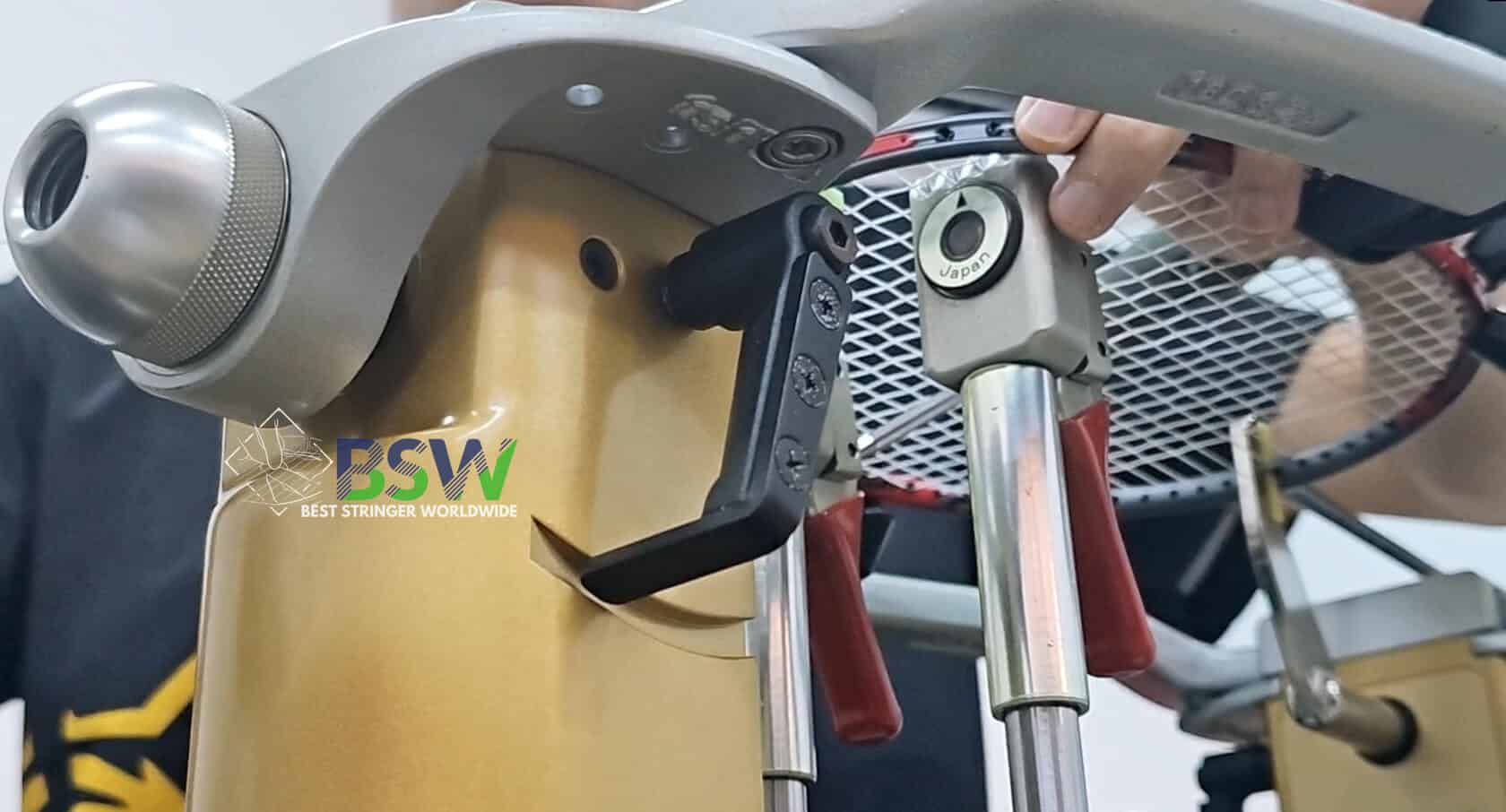Tennis elbow, known medically as lateral epicondylitis, is one of the most common sports injuries, not just in tennis but across all racquet sports. Despite its name, this condition isn’t exclusive to tennis players. It can affect anyone who engages in repetitive arm movements, including other athletes, manual laborers, and even office workers. At Best Stringer Worldwide (BSW), we’ve created this comprehensive guide to help players and stringers understand, prevent, and manage tennis elbow.
Understanding Tennis Elbow
Tennis elbow is characterized by inflammation and pain in the tendons on the outer side of the elbow. This condition occurs when the muscles responsible for extending the wrist and fingers are repeatedly strained, leading to microscopic tears in the tendon that connects these muscles to the bony prominence on the outer part of the elbow.

Symptoms of Tennis Elbow
The primary symptom of tennis elbow is pain and tenderness on the outer part of the elbow. This pain may radiate down the forearm and can be particularly noticeable when:
- Gripping or lifting objects
- Opening doors or shaking hands
- Raising your hand or straightening your wrist
- Performing tennis strokes, especially the backhand
Causes of Tennis Elbow in Tennis Players
While tennis elbow can affect anyone, tennis players are particularly susceptible due to the nature of the sport. The main factors contributing to tennis elbow in players include:
- Improper Technique: Incorrect stroke mechanics, especially on the backhand, can put excessive stress on the elbow tendons.
- Off-center Hits: Consistently hitting the ball outside the racquet’s sweet spot increases vibration and shock to the arm.
- Overuse: Playing too frequently or for extended periods without adequate rest can lead to tendon fatigue and injury.
- Equipment Issues: Using a racquet that’s too heavy, strung too tightly, or has a grip size that’s incorrect for your hand can contribute to tennis elbow.
- Sudden Increase in Playing Time or Intensity: Rapidly increasing your play time or the intensity of your training can overwhelm your tendons before they’ve had time to adapt.
String Material Simulator for Tennis Elbow Risk
Tennis Elbow Risk:
Moderate Risk
The Role of Tennis Strings in Tennis Elbow
Tennis strings play a crucial role in the development and prevention of tennis elbow. The type of string, its tension, and even the pattern of stringing can all impact the amount of shock and vibration transmitted to a player's arm. Let's explore how different aspects of tennis strings relate to tennis elbow:
String Types and Tennis Elbow
Different string materials have varying properties that can affect your risk of developing tennis elbow:
- Natural Gut: Known for its excellent shock absorption and arm-friendliness. It's often recommended for players prone to tennis elbow.
- Multifilament: Designed to mimic the properties of natural gut, these strings offer good shock absorption and comfort.
- Synthetic Gut: A budget-friendly option that provides moderate comfort and shock absorption.
- Polyester: While popular for its spin potential and durability, polyester strings are stiffer and transmit more shock to the arm, potentially increasing the risk of tennis elbow.
| String Material | Comfort Level | Shock Absorption | Tennis Elbow Risk | Recommended Tension |
|---|---|---|---|---|
| Natural Gut | Excellent | Excellent | Low | Medium to Low |
| Multifilament | Very Good | Good | Low to Moderate | Medium |
| Synthetic Gut | Good | Moderate | Moderate | Medium to Low |
| Polyester | Poor | Poor | High | Low |
| Hybrid (Poly/Gut) | Good | Good | Moderate | Medium to Low |
String Tension and Tennis Elbow
The tension at which strings are installed can significantly impact arm comfort and the risk of tennis elbow:
- Lower Tension:
- Increases power
- Enhances spin potential
- Improves shock absorption and reduces the risk of tennis elbow
- May reduce control slightly
- Higher Tension:
- Improves control
- Reduces power
- Increases shock and vibration transmitted to the arm, potentially increasing the risk of tennis elbow
For players prone to or recovering from tennis elbow, reducing string tension by 10-15% from their usual preference can often provide relief without significantly impacting performance.
Preventing Tennis Elbow: Tips for Players and Stringers
Whether you're a player looking to protect yourself from tennis elbow or a stringer aiming to help your clients, consider the following strategies:
For Players:
- Improve Your Technique: Work with a coach to ensure your strokes, especially the backhand, are executed with proper form.
- Strengthen Your Forearms: Incorporate exercises that target the forearm muscles to build resilience.
- Use Proper Equipment: Choose a racquet and strings that suit your playing style and physical condition.
- Warm Up Properly: Always perform a thorough warm-up before playing to prepare your muscles and tendons.
- Gradually Increase Play Time: Avoid sudden increases in playing time or intensity. Gradually build up your tennis activity.
For Stringers:
- Recommend Softer Strings: For clients prone to tennis elbow, suggest natural gut, multifilament, or softer synthetic strings.
- Advise on Tension: Educate clients about the benefits of lower tension for arm comfort.
- Consider Hybrid Setups: Recommend hybrid string setups that combine comfort and performance.
- Adjust Grip Size: Ensure the racquet's grip size is appropriate for the player's hand.
- Suggest Frequent Restringing: Encourage players to restring more often, as fresh strings absorb shock better.
Managing Tennis Elbow
If you develop tennis elbow, it's crucial to address it promptly. Here are some management strategies:
- Rest: Give your arm adequate time to heal. This might mean taking a break from tennis or reducing your playing time.
- Ice Therapy: Apply ice to the affected area for 15-20 minutes at a time, several times a day.
- Anti-inflammatory Medication: Over-the-counter NSAIDs can help manage pain and inflammation.
- Physical Therapy: A physical therapist can provide exercises to strengthen the forearm muscles and improve flexibility.
- Equipment Adjustments: Work with a professional stringer to adjust your racquet setup for better arm comfort.
- Gradual Return to Play: When returning to tennis, start slowly and gradually increase your playing time and intensity.
The Importance of Professional Stringing
Proper racquet stringing is crucial in preventing and managing tennis elbow. A professional who has completed a comprehensive tennis racquet stringing course understands the nuances of different string types, tensions, and their impact on player comfort and performance.
If you're interested in deepening your knowledge about tennis stringing and its relationship to player health, consider pursuing a tennis stringing certification. Programs like the BSW tennis racquet stringing certification provide in-depth training on all aspects of racquet customization, including strategies to help players avoid and manage conditions like tennis elbow.
Tennis elbow is a common but manageable condition in the world of tennis. By understanding its causes, taking preventive measures, and making informed equipment choices, players can reduce their risk and enjoy the game pain-free. For stringers, having a deep understanding of how racquet setup impacts player health is crucial for providing top-notch service.
At Best Stringer Worldwide (BSW), we're committed to educating both players and stringers about the technical aspects of tennis equipment and their impact on player health and performance. Whether you're looking to optimize your own game or provide better service to your clients, understanding tennis elbow and its relationship to racquet setup is an invaluable skill.
Remember, if you're experiencing persistent elbow pain, it's always best to consult with a healthcare professional for a proper diagnosis and treatment plan.
Test Your Knowledge
Now that you've learned about tennis elbow, its causes, and prevention strategies, let's test your knowledge with a quick quiz:
Tennis Elbow Quiz
By understanding the intricacies of tennis elbow and its relationship to equipment, both players and stringers can contribute to a healthier, more enjoyable tennis experience. Whether you're on the court or behind the stringing machine, this knowledge is key to peak performance and longevity in the sport.

About Best Stringer Worldwide
Best Stringer Worldwide is a comprehensive badminton and tennis stringing education program. We provide in-depth training on stringing techniques, racquet technology, and player-specific customization. Our curriculum is designed to help stringers understand and meet the needs of all badminton players, from casual enthusiasts to competitive athletes.
Read More